What is a Tank Transformer: The Powerhouse Behind Industrial Electricity?
Are you wondering why some industrial sites have those large, mysterious metal boxes? You might be looking at a tank transformer, the unsung hero of power distribution.
A tank transformer is a type of electrical transformer filled with oil for insulation and cooling. It’s crucial for industrial power systems, stepping voltage up or down to meet specific needs. These transformers are the backbone of electrical distribution in factories, refineries, and large commercial buildings.
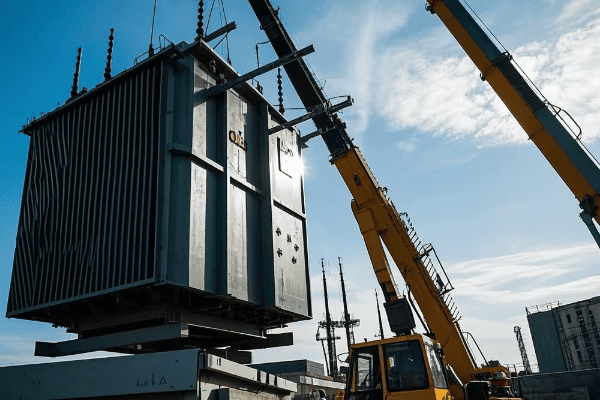
I’ve worked with tank transformers for over two decades, and I’m always amazed by their impact on industrial operations. In this article, I’ll break down everything you need to know about these powerhouses. Whether you’re an engineer, a plant manager, or just curious about industrial electricity, you’ll find valuable insights here.
How Does a Tank Transformer Work: The Basic Principles Explained?
Have you ever wondered what’s happening inside those massive metal tanks? The inner workings of a tank transformer might surprise you with their elegant simplicity.
Tank transformers work on the principle of electromagnetic induction. They use two or more coils of wire wrapped around an iron core. When alternating current flows through one coil (the primary), it creates a changing magnetic field. This field induces a voltage in the other coil (the secondary), effectively transferring electrical energy.
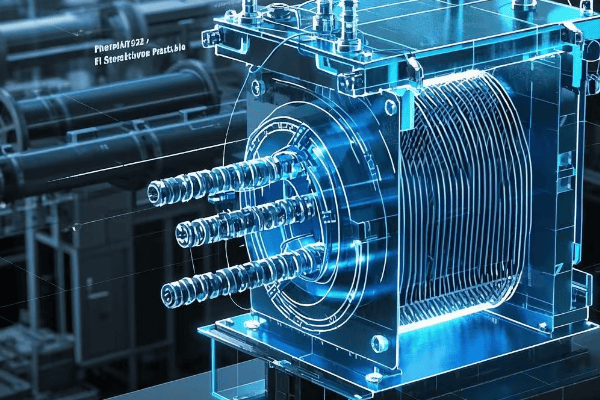
I remember the first time I opened up a tank transformer during maintenance. The sheer size of the coils and the precision of their arrangement left me in awe. Let me break down how these giants of industry actually work.
The Core: The Heart of the Transformer
The core of a tank transformer is crucial to its operation:
-
Material:
- Usually made of thin laminations of silicon steel
- Designed to minimize energy losses due to eddy currents
-
Shape:
- Can be "core-type" (rectangular) or "shell-type" (surrounded by windings)
- Shape affects efficiency and cooling capabilities
-
Function:
- Provides a path for the magnetic flux
- Concentrates the magnetic field, improving transformer efficiency
The Windings: Where the Magic Happens
The windings are where electrical energy is transformed:
-
Primary Winding:
- Receives the input voltage
- Creates the changing magnetic field
-
Secondary Winding:
- Induced voltage creates the output
- Number of turns determines the voltage change
-
Winding Ratio:
- Determines the voltage transformation ratio
- More turns on secondary = step-up transformer
- Fewer turns on secondary = step-down transformer
The Oil: More Than Just Cooling
The oil in a tank transformer serves multiple purposes:
-
Insulation:
- Provides electrical insulation between components
- Allows for closer spacing of parts, reducing transformer size
-
Cooling:
- Absorbs heat from the core and windings
- Circulates naturally or through forced circulation systems
-
Protection:
- Prevents oxidation of the internal components
- Can be analyzed to detect potential issues early
| Component | Function | Importance |
|---|---|---|
| Core | Magnetic flux path | High – affects efficiency |
| Primary Winding | Input voltage | Critical – creates magnetic field |
| Secondary Winding | Output voltage | Critical – produces desired voltage |
| Oil | Insulation & Cooling | Essential – enables compact design and longevity |
In my years working with tank transformers, I’ve seen firsthand how these principles play out in real-world applications. One memorable project involved upgrading a factory’s power system. We replaced an old, inefficient transformer with a modern tank transformer. The improvement in power quality and energy efficiency was remarkable. The factory owner was amazed at how much smoother their equipment ran and how much they saved on energy costs.
However, it’s important to note that while the basic principles of tank transformers are straightforward, their design and construction require precise engineering. Factors like core material quality, winding arrangement, and oil composition all play crucial roles in a transformer’s performance and lifespan.
Understanding these basics is just the start. As we delve deeper into the world of tank transformers, you’ll see how these principles are applied in various types of transformers, how they compare to other designs, and how they’re evolving to meet the changing needs of industry and energy distribution.
Key Components of a Tank Transformer: From Core to Cooling System?
Ever wondered what’s inside that massive metal tank? The components of a tank transformer are like a well-orchestrated team, each playing a crucial role in powering our industries.
A tank transformer consists of several key components: the core, windings, insulation system, tank, cooling system, and various accessories. Each part is essential for the transformer’s operation, from converting voltage to ensuring safety and efficiency.
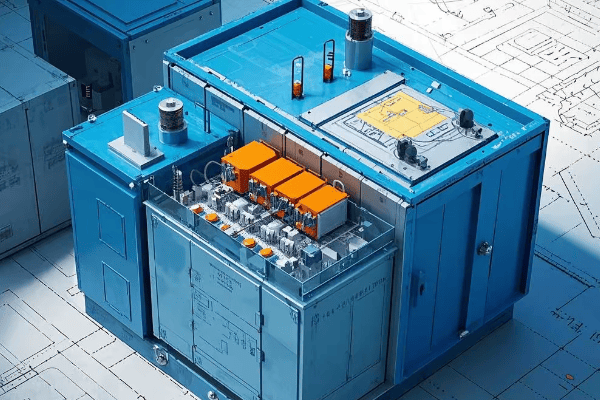
I’ve spent countless hours working on these transformers, and I’m always impressed by how each component contributes to the overall function. Let’s dive into the details of these crucial parts.
The Core: The Magnetic Powerhouse
The core is the heart of the transformer:
-
Material:
- Usually made of high-grade silicon steel
- Laminated to reduce eddy current losses
-
Design:
- Can be core-type or shell-type
- Affects the transformer’s efficiency and size
-
Function:
- Provides a low-reluctance path for magnetic flux
- Critical for the transformer’s overall efficiency
Windings: Where Voltage Transformation Happens
Windings are the key to voltage transformation:
-
Primary Winding:
- Receives input voltage
- Creates the magnetic field
-
Secondary Winding:
- Induced voltage creates output
- Number of turns determines voltage ratio
-
Material:
- Usually copper or aluminum
- Choice affects cost and efficiency
Insulation System: Keeping Everything Safe
The insulation system is crucial for safety and longevity:
-
Oil:
- Provides insulation and cooling
- Can be mineral oil or synthetic alternatives
-
Paper:
- Wraps around windings
- Impregnated with oil for better insulation
-
Barriers:
- Separate different voltage components
- Enhance overall insulation strength
Tank and Conservator: Housing and Protection
The tank and conservator protect and contain:
-
Tank:
- Houses all internal components
- Designed to withstand internal pressure
-
Conservator:
- Allows for oil expansion
- Maintains oil level and purity
Cooling System: Keeping Things Cool
The cooling system is vital for efficiency and longevity:
-
Radiators:
- Increase surface area for heat dissipation
- Can be detachable for maintenance
-
Fans:
- Used in forced-air cooling systems
- Enhance cooling capacity
-
Oil Pumps:
- Used in forced-oil cooling systems
- Circulate oil for more efficient cooling
Accessories: Monitoring and Control
Various accessories ensure safe and efficient operation:
-
Bushings:
- Insulate and support external connections
- Critical for safety and performance
-
Tap Changer:
- Allows for voltage adjustment
- Can be on-load or off-load type
-
Monitoring Devices:
- Temperature gauges
- Pressure relief devices
- Oil level indicators
| Component | Function | Maintenance Needs |
|---|---|---|
| Core | Magnetic flux path | Low – Check for vibrations |
| Windings | Voltage transformation | Medium – Insulation tests |
| Insulation | Safety and efficiency | High – Regular oil tests |
| Tank | Protection and containment | Low – Inspect for leaks |
| Cooling System | Temperature control | Medium – Clean and check fans/pumps |
| Accessories | Monitoring and control | High – Regular calibration and checks |
In my experience, understanding these components is crucial for anyone working with tank transformers. I remember a project where we were troubleshooting a transformer that kept overheating. By systematically checking each component, we discovered that the cooling fans weren’t activating properly. A simple fix to the control system solved the problem, saving the client from a potential catastrophic failure.
It’s important to note that while each component has its specific role, they all work together as an integrated system. The quality and condition of each part affect the overall performance and lifespan of the transformer. Regular maintenance and monitoring of all components are essential for ensuring reliable operation.
As technology advances, we’re seeing innovations in each of these areas. For example, new core materials are being developed to reduce losses, and advanced monitoring systems are making it easier to predict and prevent failures. Staying updated on these developments is crucial for anyone involved in transformer design, operation, or maintenance.
Types of Tank Transformers: Choosing the Right One for Your Needs?
Are you confused by the variety of tank transformers available? You’re not alone. Selecting the right type can make or break your power distribution system.
Tank transformers come in various types, including step-up, step-down, distribution, and power transformers. Each type is designed for specific voltage levels and applications, from powering neighborhoods to supporting large industrial complexes. The choice depends on your specific power requirements and system design.
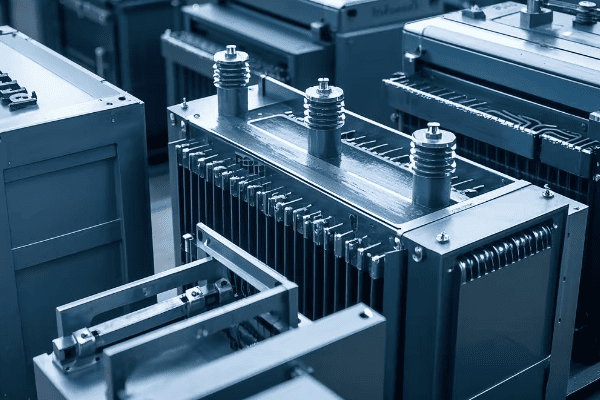
I’ve helped many clients choose the right transformer for their needs. It’s not always straightforward, but understanding the types can make a huge difference. Let me break it down for you.
Step-Up Transformers: Powering the Grid
Step-up transformers are crucial for power transmission:
-
Function:
- Increase voltage for long-distance transmission
- Typically used at power generation plants
-
Characteristics:
- Very high voltage output (up to 765kV)
- Large size and capacity
-
Applications:
- Connecting power plants to the grid
- Reducing transmission losses over long distances
Step-Down Transformers: Bringing Power to Users
Step-down transformers make electricity usable for end consumers:
-
Function:
- Reduce high transmission voltages to usable levels
- Found at substations and distribution points
-
Characteristics:
- Wide range of output voltages
- Various sizes depending on application
-
Applications:
- Substations in residential areas
- Industrial facilities requiring specific voltages
Distribution Transformers: The Last Mile
Distribution transformers are the workhorses of the power grid:
-
Function:
- Further step down voltage for final consumer use
- Typically reduce voltage to 120/240V for homes
-
Characteristics:
- Smaller size compared to other types
- Often seen on utility poles or in ground-level boxes
-
Applications:
- Residential neighborhoods
- Small commercial buildings
Power Transformers: Industrial Strength
Power transformers handle the heavy lifting in large-scale operations:
-
Function:
- Transform voltage for large power systems
- Can step up or step down voltage as needed
-
Characteristics:
- High capacity (typically above 500 kVA)
- Often custom-designed for specific applications
-
Applications:
- Large industrial complexes
- Data centers
- Renewable energy installations
Specialty Transformers: Tailored Solutions
Some applications require specialized transformer types:
-
Autotransformers:
- Single winding serves as both primary and secondary
- More compact and efficient for certain applications
-
Three-Phase Transformers:
- Handle three-phase power systems
- Common in industrial and utility applications
-
Isolation Transformers:
- Provide electrical isolation between circuits
- Used in sensitive equipment protection
| Type | Typical Voltage Range | Common Applications | Key Advantages |
|---|---|---|---|
| Step-Up | Up to 765kV | Power plants | Efficient long-distance transmission |
| Step-Down | 765kV to 120/240V | Substations, Industries | Voltage reduction for end-use |
| Distribution | 4kV to 34.5kV primary | Residential areas | Last-mile power delivery |
| Power | Varies (often >69kV) | Large industries, Data centers | High capacity, custom solutions |
| Autotransformer | Varies | Voltage regulation | Compact, efficient for small adjustments |
| Three-Phase | Varies | Industrial power systems | Efficient for three-phase loads |
| Isolation | Varies | Sensitive equipment | Noise reduction, safety improvement |
In my career, I’ve encountered numerous situations where choosing the right transformer type was critical. One memorable project involved a new data center. The client initially thought they needed a standard power transformer, but after analyzing their power requirements and future expansion plans, we recommended a custom-designed three-phase transformer with additional capacity. This foresight saved them from costly upgrades down the line.
It’s important to note that selecting the right transformer isn’t just about matching voltage and capacity. Factors like efficiency, cooling requirements, maintenance needs, and even physical size constraints all play a role. I always advise clients to consider their long-term needs and potential future expansions when making a choice.
The field of transformer design is constantly evolving. We’re seeing innovations like more efficient core materials, better cooling systems, and smart monitoring capabilities across all types of transformers. Staying informed about these advancements can help you make better decisions for your power systems.
Remember, the right transformer can significantly impact your system’s efficiency, reliability, and overall cost of operation. Don’t hesitate to consult with experts when making your choice – it’s an investment that will affect your operations for decades to come.
Tank Transformer vs. Dry-Type Transformer: A Comprehensive Comparison?
Stuck between choosing a tank transformer or a dry-type transformer? This decision can significantly impact your power system’s performance, cost, and maintenance needs.
Tank transformers use oil for insulation and cooling, while dry-type transformers use air and solid insulation. Tank transformers are typically more efficient and suitable for higher voltages, while dry-type transformers are safer in fire-sensitive areas and require less maintenance. The choice depends on your specific application, environment, and budget.
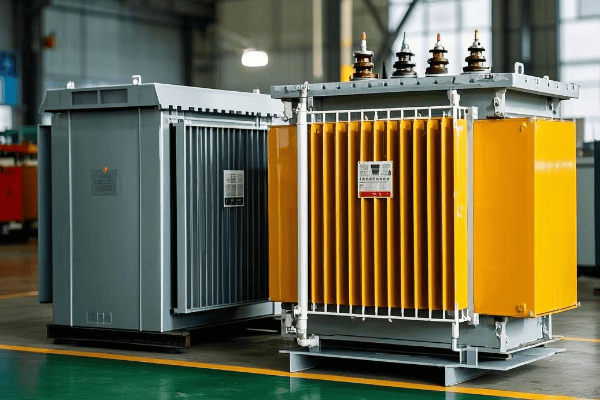
I’ve worked with both types of transformers throughout my career, and I’ve seen firsthand how this choice can make or break a project. Let’s dive into the key differences and help you make an informed decision.
Insulation and Cooling: Oil vs. Air
The primary difference lies in the insulation and cooling method:
-
Tank Transformers:
- Use mineral oil or synthetic fluids for insulation and cooling
- Excellent heat dissipation properties
- Require regular oil maintenance
-
Dry-Type Transformers:
- Use air and solid materials (like epoxy resin) for insulation
- Less efficient cooling, but no risk of oil leaks
- Minimal maintenance required for insulation
Voltage and Capacity Range
Each type has its sweet spot in terms of voltage and capacity:
-
Tank Transformers:
- Suitable for a wide range of voltages, from distribution to transmission levels
- Can handle very high capacities (up to hundreds of MVA)
- Ideal for outdoor substations and large industrial applications
-
Dry-Type Transformers:
- Typically used for voltages up to 35kV
- Capacities usually up to 10 MVA
- Perfect for indoor applications in commercial buildings and small to medium industries
Environmental Considerations
Environmental factors play a crucial role in the choice:
-
Tank Transformers:
- Risk of oil spills and environmental contamination
- Better suited for outdoor installations
- Can operate in a wide range of temperatures
-
Dry-Type Transformers:
- No risk of oil leaks or spills
- Ideal for environmentally sensitive areas
- May require climate-controlled environments for optimal performance
Fire Safety
Fire safety is a critical consideration, especially in certain environments:
-
Tank Transformers:
- Higher fire risk due to flammable oil
- Require fire suppression systems in many installations
- Not suitable for areas with strict fire safety regulations
-
Dry-Type Transformers:
- Lower fire risk due to absence of flammable liquids
- Preferred in buildings, hospitals, and other fire-sensitive areas
- Often don’t require additional fire suppression systems
Maintenance and Lifespan
Maintenance needs and expected lifespan differ significantly:
-
Tank Transformers:
- Require regular oil testing and maintenance
- Can have a longer lifespan (30-40 years) with proper maintenance
- Oil acts as a preservative for internal components
-
Dry-Type Transformers:
- Minimal maintenance required
- Typical lifespan of 20-30 years
- More susceptible to environmental factors like humidity and dust
Cost Considerations
Initial and long-term costs vary between the two types:1. Tank Transformers:
- Higher initial cost due to complex design and oil system
- Lower operating costs due to better efficiency
- Additional costs for oil maintenance and potential environmental compliance
- Dry-Type Transformers:
- Lower initial cost for smaller capacities
- Higher operating costs due to lower efficiency
- Minimal ongoing maintenance costs
Efficiency and Losses
Efficiency is a crucial factor in transformer selection:
-
Tank Transformers:
- Generally more efficient, especially at higher capacities
- Lower core and winding losses due to better cooling
- Efficiency can degrade if oil quality is not maintained
-
Dry-Type Transformers:
- Slightly less efficient, especially in larger sizes
- Higher losses due to air cooling
- Consistent efficiency over time with minimal maintenance
| Factor | Tank Transformer | Dry-Type Transformer |
|---|---|---|
| Insulation | Oil | Air and solid materials |
| Voltage Range | Wide (up to 765kV+) | Limited (typically up to 35kV) |
| Capacity | Up to hundreds of MVA | Usually up to 10 MVA |
| Environmental Risk | Higher (oil spills) | Lower |
| Fire Safety | Lower | Higher |
| Maintenance | Higher | Lower |
| Lifespan | 30-40 years | 20-30 years |
| Initial Cost | Higher | Lower for small capacities |
| Efficiency | Higher | Lower |
In my experience, the choice between tank and dry-type transformers often comes down to the specific application and environment. I remember a project for a new hospital where we initially considered tank transformers for their efficiency. However, due to strict fire safety regulations and the indoor installation requirement, we opted for dry-type transformers. The peace of mind in terms of safety and reduced maintenance needs outweighed the slight efficiency loss.
On the other hand, for a large outdoor substation project, tank transformers were the clear choice. The high voltage requirements and the need for maximum efficiency over a long lifespan made them ideal, despite the higher initial cost and maintenance needs.
It’s crucial to consider future needs as well. In one industrial project, we chose a tank transformer with slightly higher capacity than immediately needed, anticipating future expansion. This foresight saved the client from a costly upgrade just a few years later.
Remember, there’s no one-size-fits-all solution. The right choice depends on a careful analysis of your specific needs, including voltage requirements, capacity needs, installation environment, safety considerations, maintenance capabilities, and long-term cost projections. Always consult with experienced professionals to make the best decision for your unique situation.
The Role of Tank Transformers in Industrial Power Distribution?
Ever wondered how massive factories and industrial complexes manage their enormous power needs? Tank transformers play a crucial role in this complex power dance.
Tank transformers are the backbone of industrial power distribution. They handle the high voltages and large capacities required by industrial processes, stepping down transmission voltages to usable levels. These transformers ensure reliable, efficient power supply for everything from heavy machinery to sensitive control systems.
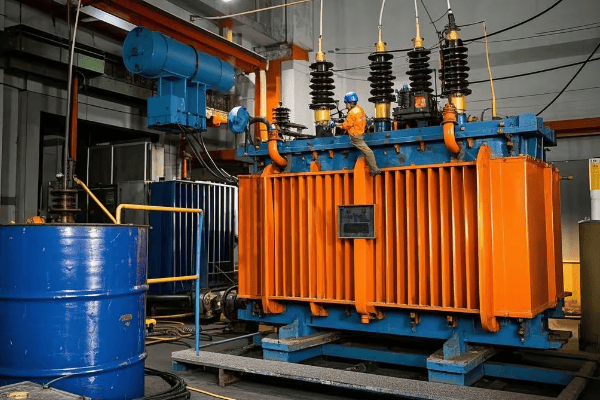
I’ve been involved in numerous industrial power projects, and I’m always amazed at how central tank transformers are to these operations. Let me share some insights on their critical role.
Voltage Transformation: Powering the Industrial Heartbeat
Tank transformers are vital for voltage management in industries:
-
Primary Function:
- Step down high transmission voltages to usable levels
- Typically transform voltages from 69kV or 138kV to 4.16kV, 13.8kV, or other medium voltages
-
Load Management:
- Handle large, fluctuating loads common in industrial settings
- Provide stable voltage despite varying demand
-
Power Quality:
- Help maintain consistent power quality for sensitive equipment
- Mitigate voltage sags and surges
Capacity and Reliability: Meeting Demanding Industrial Needs
Industrial operations require high capacity and unwavering reliability:
-
High Capacity:
- Tank transformers can handle capacities from a few MVA to over 100 MVA
- Suitable for energy-intensive industries like steel mills or chemical plants
-
Reliability:
- Designed for continuous operation under harsh conditions
- Robust construction to withstand industrial environments
-
Redundancy:
- Often installed in parallel for critical operations
- Allow for maintenance without shutting down production
Energy Efficiency: Optimizing Industrial Power Use
Efficiency is crucial in industrial settings where energy costs are a significant factor:
-
Low Losses:
- High-efficiency designs minimize energy losses
- Can significantly reduce operating costs over time
-
Load Tap Changers:
- Allow for voltage adjustment under load
- Optimize efficiency across varying load conditions
-
Monitoring and Control:
- Modern tank transformers often include advanced monitoring systems
- Enable real-time efficiency optimization
Safety and Environmental Considerations
Tank transformers must meet strict safety and environmental standards:
-
Containment Systems:
- Designed to prevent oil leaks and spills
- Often include secondary containment measures
-
Fire Safety:
- Equipped with fire suppression systems
- Located in dedicated areas away from main production
-
Environmental Compliance:
- Use of biodegradable oils in some modern designs
- Regular monitoring for environmental impact
Integration with Industrial Power Systems
Tank transformers are key components in complex industrial power systems:
-
Substation Integration:
- Often part of on-site substations in large industrial complexes
- Interface between utility supply and plant distribution
-
Power Factor Correction:
- Work in conjunction with power factor correction equipment
- Help maintain optimal power factor for the facility
-
Renewable Energy Integration:
- Increasingly used to integrate on-site renewable generation
- Handle bidirectional power flow in modern industrial microgrids
| Aspect | Role in Industrial Power Distribution |
|---|---|
| Voltage Transformation | Step down high voltages to usable levels |
| Capacity | Handle large loads (up to 100+ MVA) |
| Reliability | Ensure continuous power for critical processes |
| Efficiency | Minimize energy losses in power distribution |
| Safety | Comply with industrial safety standards |
| Environmental | Manage environmental risks of oil-filled equipment |
| System Integration | Key component in complex power systems |
In my career, I’ve seen firsthand how crucial tank transformers are in industrial settings. One particularly memorable project involved a large automotive manufacturing plant. The facility needed to upgrade its power distribution system to accommodate new high-power robotic welding lines. We installed a new 40 MVA tank transformer as part of the upgrade. The transformer not only handled the increased power demand but also improved overall energy efficiency. The plant manager was amazed at how this single piece of equipment could have such a significant impact on their operations.
Another interesting case was a chemical plant that needed extremely reliable power for its sensitive processes. We implemented a system with redundant tank transformers and advanced monitoring. This setup allowed for continuous operation even during maintenance periods and provided early warning of any potential issues.
It’s important to note that while tank transformers are powerful and efficient, they require careful planning and maintenance. In industrial settings, even a short power interruption can result in significant production losses. That’s why I always emphasize the importance of regular maintenance, monitoring, and having a solid contingency plan.
As industries evolve, so do the demands on power distribution systems. We’re seeing trends towards more energy-efficient processes, increased automation, and integration of renewable energy sources. Tank transformers are adapting to these changes with more efficient designs, smart monitoring capabilities, and the ability to handle bidirectional power flow. Staying informed about these advancements is crucial for anyone involved in industrial power systems.
Advantages and Disadvantages of Tank Transformers: What You Need to Know?
Considering a tank transformer for your project? It’s crucial to weigh both the pros and cons before making this significant investment.
Tank transformers offer high efficiency, large capacity, and excellent cooling capabilities. They’re ideal for high-voltage applications and outdoor installations. However, they come with higher maintenance needs, environmental risks due to oil, and greater fire hazards. Understanding these trade-offs is key to making the right choice for your power needs.
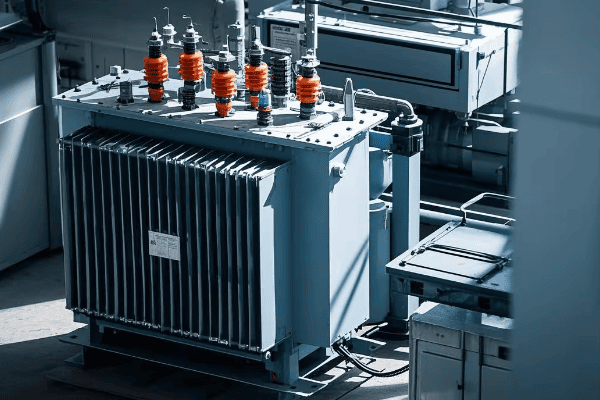
I’ve worked with tank transformers for years, and I’ve seen their strengths and weaknesses in action. Let me break down what you really need to know.
Advantages: The Power of Tank Transformers
Tank transformers have several significant benefits:
-
High Efficiency:
- Lower energy losses due to superior cooling
- Can maintain efficiency even at high loads
-
Large Capacity:
- Capable of handling very high voltages and power loads
- Ideal for industrial and utility-scale applications
-
Excellent Cooling:
- Oil provides superior heat dissipation
- Allows for more compact design relative to capacity
-
Longevity:
- Can last 30-40 years with proper maintenance
- Oil acts as a preservative for internal components
-
Outdoor Suitability:
- Designed to withstand various weather conditions
- Ideal for substations and outdoor installations
-
Overload Capability:
- Can handle short-term overloads better than dry-type transformers
- Provides operational flexibility
Disadvantages: Challenges to Consider
However, tank transformers also come with some drawbacks:
-
Maintenance Requirements:
- Regular oil testing and maintenance needed
- Potential for oil leaks and contamination
-
Environmental Concerns:
- Risk of oil spills and environmental damage
- Disposal of old oil can be challenging and costly
-
Fire Hazard:
- Oil is flammable, increasing fire risk
- May require additional fire suppression systems
-
Initial Cost:
- Generally more expensive upfront than dry-type transformers
- Installation costs can be higher due to size and weight
-
Size and Weight:
- Larger and heavier than equivalent dry-type transformers
- May require special transportation and installation equipment
-
Noise:
- Can be noisier than dry-type transformers
- May require additional noise mitigation in some settings
Real-World Implications
These advantages and disadvantages play out in various ways:
-
Industrial Applications:
- Pros: High efficiency and capacity are crucial for large industrial operations
- Cons: Environmental risks may require additional safeguards
-
Urban Installations:
- Pros: Ability to handle high loads in compact spaces
- Cons: Fire risk and noise may be problematic in densely populated areas
-
Utility Substations:
- Pros: Ideal for outdoor settings and high-voltage applications
- Cons: Regular maintenance needs can increase operational costs
-
Renewable Energy Projects:
- Pros: Can handle large capacities needed for wind or solar farms
- Cons: Environmental concerns may conflict with green energy goals
| Aspect | Advantage | Disadvantage |
|---|---|---|
| Efficiency | High, especially at large capacities | – |
| Capacity | Can handle very high voltages and loads | – |
| Cooling | Excellent heat dissipation | Requires oil maintenance |
| Lifespan | 30-40 years with proper care | – |
| Environmental Impact | – | Risk of oil spills |
| Fire Safety | – | Higher fire risk |
| Maintenance | – | Regular oil testing required |
| Initial Cost | – | Generally higher than dry-type |
| Size and Weight | – | Larger and heavier |
| Noise | – | Can be noisier |
In my experience, the decision to use a tank transformer often comes down to specific project requirements and constraints. I remember a project for a large data center where we initially considered tank transformers for their efficiency and capacity. However, the client’s strict fire safety requirements and desire to minimize maintenance led us to choose dry-type transformers instead, despite the slight efficiency loss.
On the other hand, for a recent substation upgrade project, tank transformers were the clear choice. The outdoor location, high voltage requirements, and need for maximum efficiency over a long lifespan outweighed the maintenance considerations and environmental precautions we had to implement.
It’s crucial to consider long-term factors as well. In one industrial project, we chose a slightly oversized tank transformer, anticipating future expansion. This foresight saved the client from a costly upgrade just a few years later, demonstrating how the advantages of tank transformers can pay off over time.
When considering tank transformers, it’s essential to conduct a thorough cost-benefit analysis. Factor in not just the initial purchase and installation costs, but also long-term operational expenses, maintenance requirements, and potential risks. In some cases, the efficiency gains of a tank transformer can offset higher upfront costs over its lifespan.
Remember, there’s no one-size-fits-all solution. The right choice depends on a careful analysis of your specific needs, including voltage requirements, capacity needs, installation environment, safety considerations, maintenance capabilities, and long-term cost projections. Always consult with experienced professionals to make the best decision for your unique situation.
Conclusion
Tank transformers are powerful, efficient, and crucial for high-capacity power distribution. They offer significant advantages in efficiency and capacity but come with maintenance and environmental considerations. Careful analysis of your specific needs is essential for making the right choice in transformer selection.
Free CHBEB Transformer Catalog Download
Get the full range of CHBEB transformers in one catalog.
Includes oil-immersed, dry-type, pad-mounted, and custom solutions.
Quick Message
Request A free quote
We'd like to work with you
- +86 15558785111
- [email protected]
- +86 15558785111
What We Do
CHINA BEI ER BIAN (CHBEB) GROUP, with 218 million in registered capital, originated from Beijing Beierbian Transformer Group. Headquartered in Beijing for R&D, it operates major production bases in Nanjing and Yueqing, producing high-quality products.
Latest Product
address
BeiJing
No 3,RongJing East Road,BeiJing Economic Technological Development Area,BeiJing,China
JiangSu
No 7️Xiangfeng Road,Jiangning,NanJing,JiangSu,China
WenZhou
No.211, Wei 16 Road, Industrial Zone, Yueqing, Wenzhou, Zhejiang, China.
XiangYang Industrial Zone ,YueQing,WenZhou,ZheJiang,China
contact us
- [email protected]
- +86 13057780111
- +86 13057780111
- +86 15558785111
Copyright © Bei Er Bian Group


